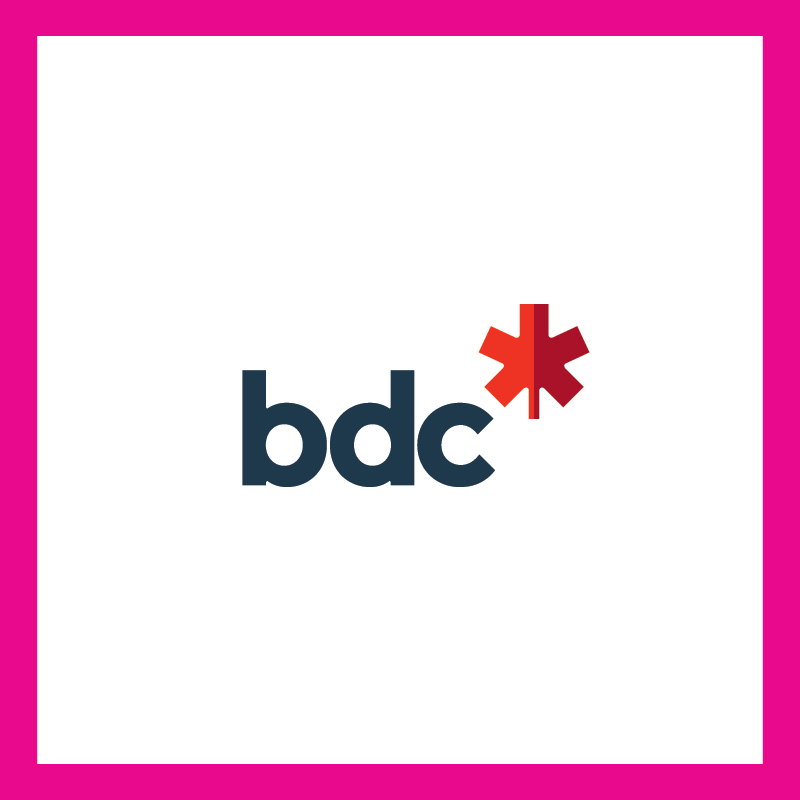Speaking the universal language of mythology with photographer Zhen Huang
Pride In Business: Why did you choose to become a photographer?
Zhen Huang: For me, photography kind of started has a hobby. After studying graphic design at ACAD and being surrounded by young artists related to art and modelling, I started to network with a local group of artist and local photographers. I just got more and more exposed to it, especially when a friend of mine exposed me to his process with photography. I felt so inspired, and it felt so fun and spontaneous. Not only that, but I really saw myself doing something like what he was doing, and I decided to pick up a camera and give it a try and see how much I’d enjoy it.
PIB: Did you have any childhood experiences that shaped the way you chose to present art?
ZH: Oh, for sure. My family is an artistic family. My grandpa and my dad, they’re both artists. Especially my dad, he is doing art as a hobby as well. He also graduated from an art school and was doing a lot of oil painting of the masters. He would study a lot of Russian artists and a lot of neoclassical kinds of art as well. I grew up seeing a lot of well-done copy of the master’s work, and therefore had a lot of early experiences with classical art. I started to express an interest in art since I was little, I would always draw and love to look at those things. In my family, we also had a huge book of the entire art history, including the masterpieces of the classical art. I was exposed to nudity through the entire art period via that kind of work and very naturally connected with them. When I started to photograph sexy male figures, I very quickly started to connect to those elements of classic art. It just clicked. Really quickly, I realized it is something I want to show in my work.
PIB: That's amazing that you got to grow up in a family that is very art-oriented and supportive of it!
ZH: Well, they're still Asian parents. So, they want me to do well, like all other Asian families. But I insisted that I love art. Therefore, when I came to Canada, I compromised my desire by deciding to study graphic design since it is somewhere in between practical and artistic. Therefore, I chose to work in that industry.
PIB: What attracted you towards male photography?
ZH: What attracts me? I guess just a human form first, just from the art perspective, and that’s also connected with my sexuality as well. As I think through all the history, it's always together. When I was little, I was never shy of showing nude art even when I was doing like a cartoon, a manga, a god, or a mythical creature, which, for the last two, there is a lot of form showcasing nudity. It came naturally for me. As for the aspect of male art, I became more comfortable with it when I came out to myself. My sexuality was always kind of blurred until I figured out in junior high that I am gay, and I never had an issue admitting it. When I was little, I would draw more female models as they are curvier and there is more examples of it in the art books. But as I came more in touch with my sexuality, I switched to drawing more male nude figure in my work.
PIB: In your photography, there is a lot of fetish gear (jockstrap, harness, etc), what made you chose to present these types of gear in a more artistic way?
ZH: That is a part of me. I am a pretty kinky person in life and a member of multiple kinky fan community like the leather men/leather puppy community. So, this is part of me that I show my models into. I often put them into my gear for multiple reasons. First, a lot of these things enhance the form and shape of their body. I get criticized by some people because they are saying that all my models look gay, even though a lot of them are straight. And that it all looks like a board game. To which I argue, it's just an artistic direction and the way I appreciate the human form. So often, I use my gear because I have it and a lot of the models are amateur, they will often ask me to borrow some gear for the shoot. Luckily, my models are very open-minded, especially Daniel, who is my favourite model. Even though he’s straight, he is very open to his sexuality and not afraid to look sexy for both men and women.
PIB: Your work includes a wide range of body diversity, what makes you want to showcase that?
ZH: I think that as I am an example of diversity due to being Asian and gay, showing diversity is just a natural language for me. And you know, representation is something that I keep thinking about, I have my preferences for my own sexual experiences but at the same time, the longer I work and live, the more open I am to every possibility. Nowadays, I am open to any attractive people, exploring different avenues of my sexuality, and try to see the beauty in all kinds of men and women. I mostly shoot men these days, as it is the form that I am the most into. But one piece I am showcasing at this exposition has a female model: Danielle. She is amazing.
Often people that I run into will say to me that they are not the regular type of model I work with, and I always try to tell them that it doesn’t matter the type of model you are. What matters to me is if I find something attractive in you and I want to showcase it through my work. You could be a bear, really built, skinny, feminine, or something else. People think I find the most attractive model because I love their look and that why I approach them for.
PIB: How do you adapt the Neoclassicism and Symbolism of Maxfield Parrish and Gustave Moreau in your work?
ZH: I guess it ties again with my experience about classical art and stuff as I was growing up. My father always tries to discourage me to have a career in art, but always supported it as a hobby. I grew up with a big book of classical art and a big book of Greek mythology, which was the first thing I started to read when I was little. I was also deeply inspired by the Chinese mythology. Although, to me, the Greek mythology felt more exotic and truly inspired me. In combination to that was art history class where you learn the story behind the mythology and looking at the classical representation of it. That truly inspired me. Also, their style is very mature. Their technique is very good. Realistic. The usage of lighting and colour, it makes it a very mature period of art. In the neoclassical period, the male figure is very common and very appreciated, like in the ancient time. But as the history evolved, the female figure becomes dominant. It took a turn from Apollo to Venus. Her image is in all the European kind of classical art. But during the neoclassical phase, it went back to the male being the dominant seeker and the masculinity of the art, which is inspired a lot from the ancient Greek. For me, the neoclassical brings back these more mature things in their design. I usually inspire myself from the environment of the model, and then try to associate a mythological context to the art I create.
PIB: What attract you towards mythologies, and who are some of your favourite mythology figures?
ZH: Like I previously said, Greek mythology was a great experience for me, especially as a kid and before my sexual awakening. Now, when I think back, it feels like a blur feeling of sexual attraction in my early age through the art I have seen, the story and nature of the Greek mythology. Through it all there are a lot of beautiful figures engraved. In the time of Greek mythology, they really appreciated the human form. It is all about the physical form which can be observed to this day. Think about those body builders, they are basically inspired by the ancient Greek figure and standard of beauty. Those images and stories influenced me from a young age due to my attraction towards it and it stories that have a lot of imagination that comes with it. When I started working on my own art, I ended up using a lot of my knowledge of these things, and it just came out naturally.
For a mythological figure, Apollo is definitely the god that I always felt attracted to. He’s a god that is bisexual, he has male and female lovers, and is seen as the beauty standard for a male seeker. When I was much younger in art class, we had a plaster of Apollo from Europe. And that sculpture was so beautiful, the detail of the face and the hairstyle. Looking at it, I was always amazed at the beauty. I haven’t done Apollo yet, as I need to find the perfect canvas for him. I think I was also drawn to it as, in the ancient Greek time, homosexual love is seen as a much more normal form of love than it is today, right? In the Greek mythology, many gods like Zeus have same sex lovers.
PIB: A lot of the work you chose to showcase at this art event refers to demons and gods of the underworld, why did you choose to showcase those, and how do you approach your work to showcase the duality within these mythologies’ creatures?
ZH: The context of a god is something I find fascinating. You may perceive a god in a certain way depending on your degree of familiarity surrounding it. However, when you start to read more and explore, you found out that one god is not just one thing, it has evolved through history, can originate from many places, shares between multiple different mythologies, and can appear in different forms or meaning between them.
One example is Hephaestus. I knew he’s a Greek god since I was little. He’s a great blacksmith, perceived as a less attractive man according to the myth. He’s the husband of Aphrodite. But when you start doing more research, you find out he’s a borrowed god from the Eastern side of Eurasia. This might explain why he is perceived as a less attractive god than the others due to him being different.
And even Aphrodite, when you read a lot, you realize that she is described as a beauty and the goddess of love. But you learn that in her original form there is a mix of many goddesses, including one of them being a war goddess, more like an Athena counterpart. You see some inconsistency in their stories. Athena, for example, is the goddess of wisdom and is seen in some stories as a strong helper to a hero. But sometimes she is jealous of a mortal and will punish people ruthlessly. The difference comes from the evolution of these myths through time.
Through this project, a side effect is that I get to learn a lot about the culture of these different mythologies, and it is also something that applies in having multicultural models.
The Kitsune is another example that is fascinating. I grew up in China, and we call it “Huli Jing,” which refers to the fox demon. It is usually considered as a negative figure. They are very charming foxes that study magic and practice it for a hundred thousand of year. They can take human forms and are very unstable. If they decide to go into the light path, they follow the chi of the nature and help other creature. Then they kind of evolve into demigod and are worship by people with temples and are said to be helpful especially with your lack of love. But then there is the other side where the fox decides to choose an evil path — a faster way to become powerful — they seduce the evil and sucking their energy from its body which result in people becoming weak and dying. They are seen as the evil creature.
The “Huli Jing” is also used to describe the other woman who steal your men in modern day China. When I am looking at the Japanese and Korean mythology surrounding the fox, it is very similar between them. The Kitsune is also considered a trickster. The fox is perceived as a protector of agriculture since it is a predator of the rat and therefore protecting the crops. Another reason why it is perceived that way comes from the fact that the sound of the god of agriculture is like the sound of a fox.
I am having a lot of fun when I am starting a new mythological figure. Selecting the model, looking at their environment, learning about the mythology, learning the background about their special culture, and finding a way to tie those things together and creating a continuous project.
In the aspect of the duality, I am staying neutral when I use my work to present one mythological figure. I don’t see it as evil or a holy figure. I think it is another reason why Greek mythology inspired me since I was little, is because they all have flaws. The god is not the god that is perfect. They all have good things that they do and terrible things.
At the end of it all, I am doing a portrait and I want it to be meaningful to the person I am shooting.
PIB: What is the message you want people to retain as they leave your exposition?
ZH: For the viewer, when I post those work on Instagram, I usually don’t really add a lot of text other than a small caption that captures my work. For this series, I try to go through research, and I’ll put a folder that is very selective describing the background of this mythology. I hope when my followers see this kind of work, they get to learn a little — the same way I learn — and my models learn through sharing their thoughts and our common research. I want them to learn a little about the culture, or the mythology story itself or about the model. Maybe there is something they don’t know about their friends. I want it to be a little inspirational, and I leave it to the viewer to decide how much they want to immerse themselves. I hope they get the same level of enjoyment that the model and I have.
PIB: What would be the legacy you hope for with your work?
ZH: I imagine this project to be a forever ongoing project. I think I had a great moment when the first piece about Hephaestus was produced. I started to have a vision about what this project is going to be about. A lot of things inspire me, everything that was mentioned previously and, I was watching the TV show American God at that point which really helped me to visualize that project and put it together. I am happy that I get to do this project, and it ties into learning new things, my hobby, help me to make more friends as I am quite introvert most of the time, but through photography I got to meet a lot of people. It is making me happy.
And I like that mythology is an endless pool that I can draw things from. The idea is not only mythology but also a lot of things that relate to mythology, like creatures, hero, legend, magical plants like the Mandrake from Harry Potter, zodiac, Chinese zodiac, Thao card. Therefore, I call it mythic because I want it to be broad, the same as I want my model to be diverse. I want this project to evolve into a broad collection that shares the same theme. I feel like mythology is something everyone can relate too and is a human common language.
If you want to see more of Zhen Huang work or to get in touch with him:
Instagram: @zhenfoto
Email: Zhenvision@hotmail.com
ABOUT THE AUTHOR
Simon Trudel-Lachance
PIB — Sponsorship & Membership coordinator / Content Writer
Pride In Business article in partnership with TD.
By Simon Trudel-Lachance
Pride In Business article in partnership with TD.
By Simon Trudel-Lachance











